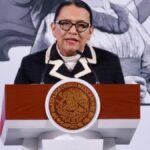Introduction to the Electoral Reform Consultation
Pablo Gómez Álvarez, head of the Presidential Commission for Electoral Reform, announced that public hearings and consultation forums are now underway across the country. The aim is to construct an open and participatory electoral reform initiative, focusing on ten key themes for public input.
Ten Key Themes for Consultation
- Political Freedoms: Discussions on enhancing and protecting political rights.
- Party System: Examination of the current party structure and potential improvements.
- Campaign Financing and Oversight: Exploring ways to regulate campaign finances and ensure transparency.
- Electoral Justice: Ensuring fairness and impartiality in the electoral process.
- Political Representation: Addressing the representation of diverse groups in politics.
- Voting Rights for Mexicans Abroad: Exploring ways to facilitate voting for Mexican citizens living outside the country.
- Mechanisms for Participatory Democracy: Including citizen-initiated referendums and plebiscites.
- Mandate Revocation: Investigating the possibility of allowing citizens to recall elected officials.
Consultation Process and Participants
These hearings are being held at the Revolution Hall in the Secretariat of Government (Segob), with participation from Segob’s head, Rosa Icela Rodríguez, and commission members Ernestina Godoy, Lázaro Cárdenas Batel, Jesús Ramírez Cuevas, Arturo Zaldívar, and José Antonio Peña Merino.
- Debates among individuals with differing viewpoints on various topics will also be encouraged.
- Four hearings have already been conducted at Segob’s facilities, and more are scheduled from September to December.
- In October, opinion polls will be carried out to gather further public input.
Online Platform for Participation
The portal reformaelectoral.gob.mx has been established for individuals to register and engage in the hearings, submit proposals, review schedules, and examine previous session discussions.
“We aim for meaningful participation, not just in volume but also in quality,” Gómez Álvarez emphasized.
Collaboration with Electoral Institutions
Gómez Álvarez mentioned a meeting with the consejeros (council members) of the National Electoral Institute (INE), agreeing to establish a collaboration channel. INE’s technical perspectives will be valuable, while the commission seeks to learn from their election organization experience.
Meetings have also been held with magistrates from the Federal Electoral Tribunal of the Judicial Power of the Federation, including both superior and regional court members, who have already participated in some hearings.
Open Forums for All
Claudia Sheinbaum Pardo, head of the federal executive, explained that these forums and public hearings are open to anyone interested in participating. She emphasized that the reform process now prioritizes citizen input over partisan decisions.
“It’s no longer just party leaders deciding electoral reform; it’s the people, including opposition parties,” Sheinbaum Pardo stated. “We welcome party participation through proposals or attendance, but our primary focus is listening to the general public, not just political leaders.”
Key Questions and Answers
- What is the purpose of these consultations? The aim is to create an open and participatory electoral reform initiative based on public input across ten key themes.
- Who is involved in these consultations? The process includes government officials, commission members, INE councilors, and magistrates from the Federal Electoral Tribunal. It is open to all interested citizens through the online portal.
- When and where are these consultations taking place? Consultations began in August and will continue through December, with hearings held at the Revolution Hall in Segob’s facilities.
- How can citizens participate? Citizens can register on the reformaelectoral.gob.mx portal, submit proposals, and engage in discussions during hearings.
- What is the expected outcome? The gathered input will inform President Claudia Sheinbaum’s electoral reform proposal, which is expected to be submitted to Congress in January 2026.






